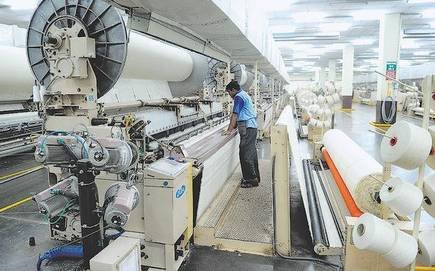The Indian Textile industry employs over 100 million people, 10 crore people directly or indirectly and all of those are set to be hit by this crisis.
After the auto industry hit a crisis, the baton has now passed to the textiles. The growing uncertainty, increasing debt, with no light at the end of the tunnel ahead, is beginning to shadow the entire country.
Indian spinning industry facing the biggest crisis, resulting in huge job losses. As compared to the last year, the value of cotton yarn export has gone down since 2018. State and Central level taxes and levies result in Indian yarn being rendered non-competitive in the global market.
Indian yarn is becoming non-competitive in global markets due to Central and state-level taxes and levies being exported in prices. In addition, there are high rates of interest on capital borrowed. The cost of raw materials is also high compared to global prices, resulting in the loss of Rs. 20-25 per kg to Indian mills. Moreover, there is a rise in imports of yarn and garments from countries like Bangladesh, Sri Lanka and Indonesia. These countries are able to offer these products at lower prices due to their lower cost of raw materials.
Statistics
As per Directorate General of Commercial Intelligence and Statistics, In April 2019, the export of cotton yarn dropped 21%. In Apil 2018, the value of export was US$ 337 million, but in 2019 April it came down to US$ 266 million.
Subsequently, in May 2018, the export value was US$ 349 million, but a year later it came down to US$ 241 million, the downfall of about 30.8%.
June has been the worst so far. In 2018 June the value of cotton yarn export was US$ 378 million which came down to US$ 188 million in June 2019, which is almost 50.1% of downfall. Overall, the export of cotton yarn from India dropped 34.6 per cent to $696 million in the first quarter of fiscal 2019-20 from $1.063 billion in April-June quarter between 2018-19.
Approximately one-third of textile mills closed down
The textile industry crisis has resulted in the closure of approximately one-third of spinning capacity across India. Mills that are currently running are in huge cash losses. They are not in a position to buy and consume Indian cotton.
The upcoming cotton crop of about 40 million bales which is valued at 80,000 cr rupees would not find any buyer in India or abroad because India still has not moved to the globally adopted purely market-driven agri-commodity markets with the government directly supporting the farmers at minimum selling price (MSP) level.
There is a threat of 10 crore people losing their jobs, their livelihood, the association has sought immediate remedies and intervention by the government of India to avoid the spinning industry from becoming an NPA. This industry not only economically but historically has significance. The sector that brought about first successful make in India campaign is in crisis today.

